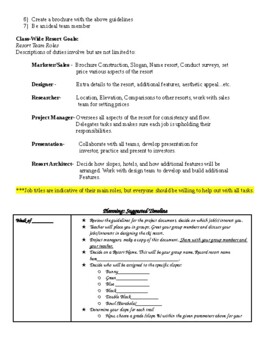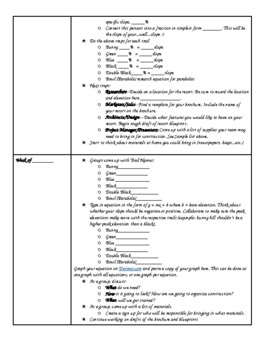Linear Equations Ski Resort Project w/ Timeline, Rubrics, & Peer Evaluation
What educators are saying
Description
Get ready to see students amaze you with their high-quality work as they demonstrate their learning of linear equations and functions. Students will design and create a model of a ski resort, using y = mx + b to construct 2-D and 3-D ski slopes!
This project is great for general education classrooms, differentiated groupings, gifted learners, expeditionary learning, cumulative and summative assessments, genius hour, 80/20, passion projects, and so much more! What's best is it reaches all learning styles!
This activity applies linear equations y = mx + b and modeling linear functions.
Grade Levels 7-10 (standards can be adjusted on assignment based on rigor and differentiation)
Packet includes:
· Project Guidelines & Expectations with Common Core Standards and Learning
Targets
· Lead-in Activity Resources
· Detailed Project Timeline
· Grading Rubric for Project (4-3-2-1 can be adjusted to percents or letter grades.)
· Peer Evaluation with Rubric (one of my popular resources that can be edited for any
group project!)
If you would like to message me for pictures of my finished projects past, and present...feel free! You will love the end products, and again, be amazed at what your students can do when given the freedom to create and take risks!
Project time varies... timeline can be shortened or lengthened depending on the class, and if it's used for 80/20 or genius hour.
Thanks for viewing!





